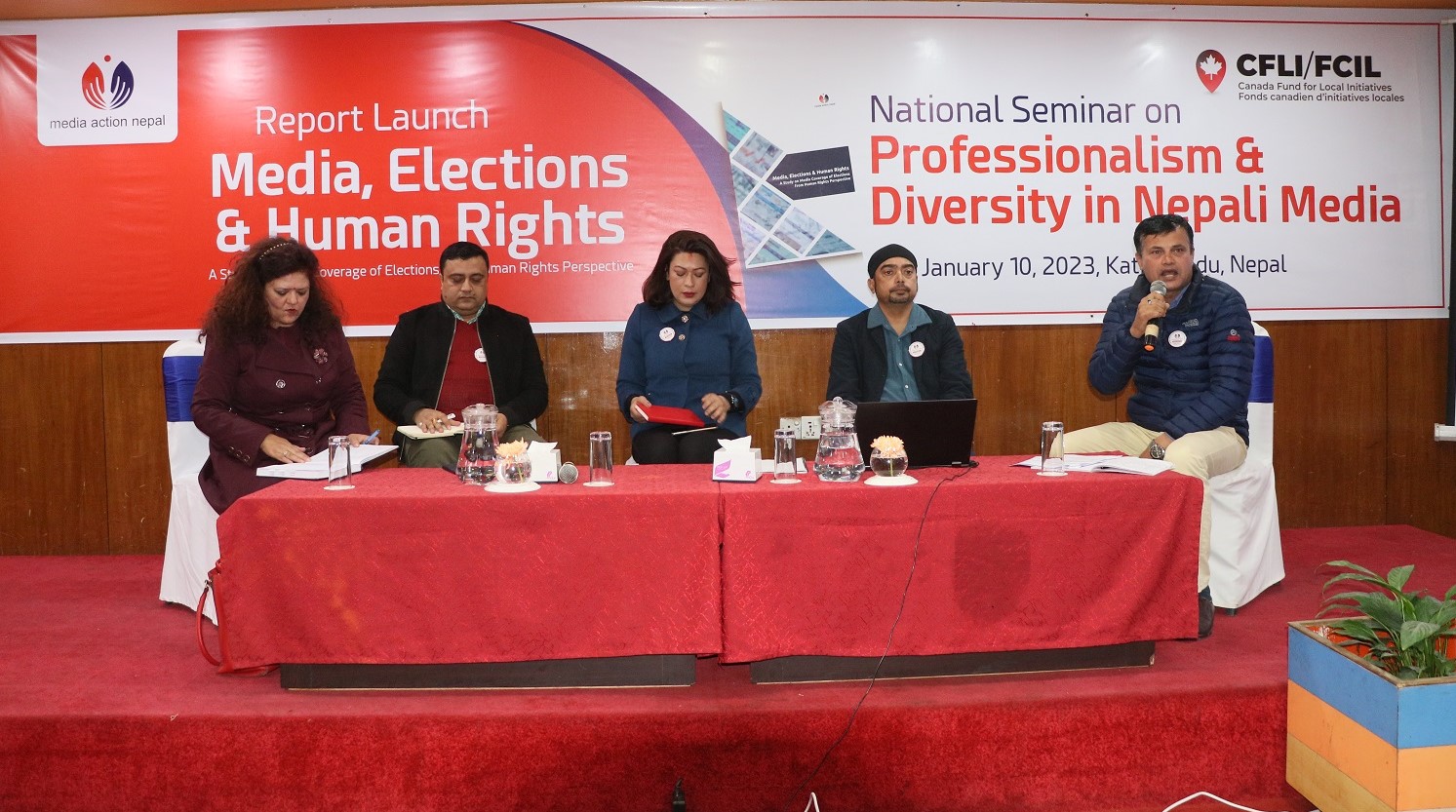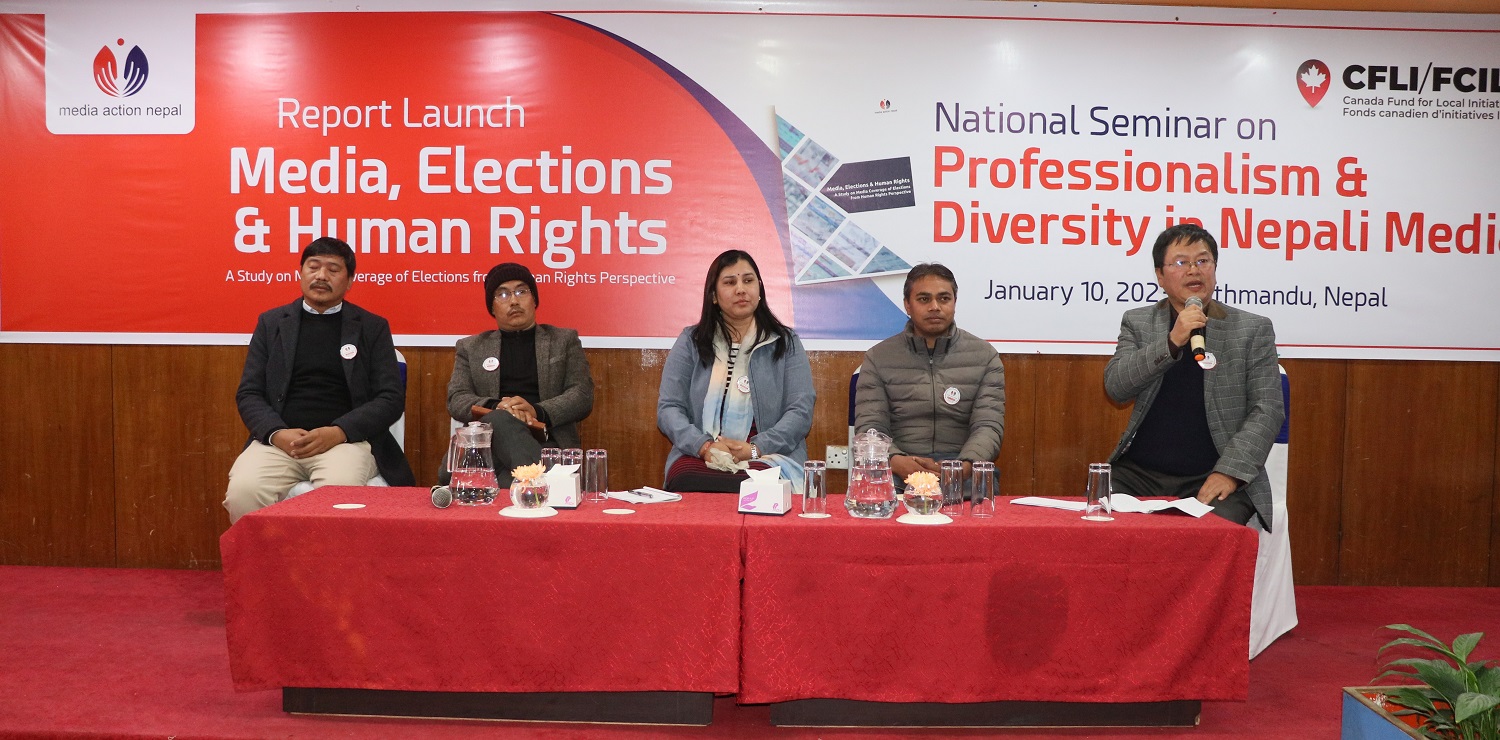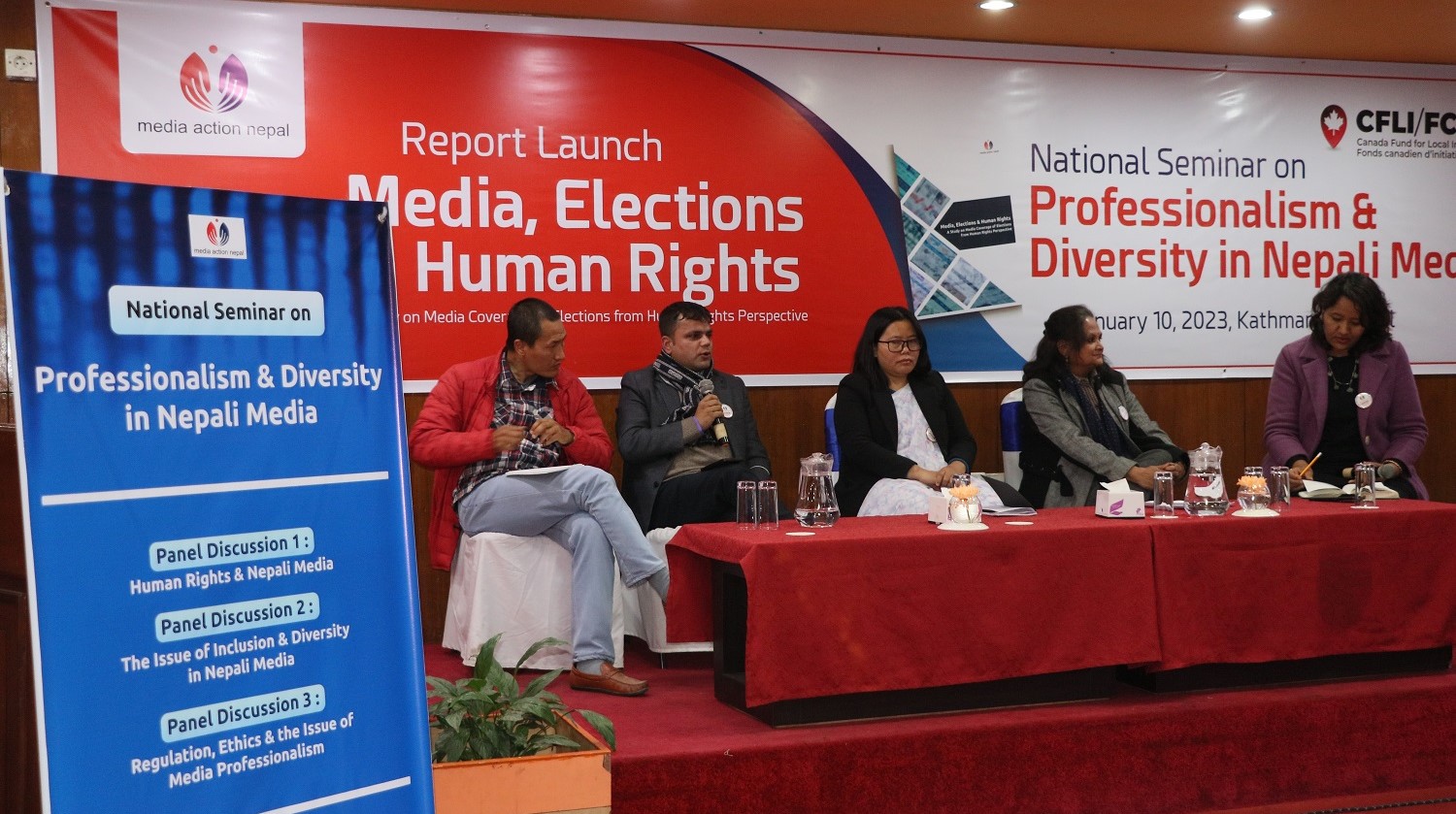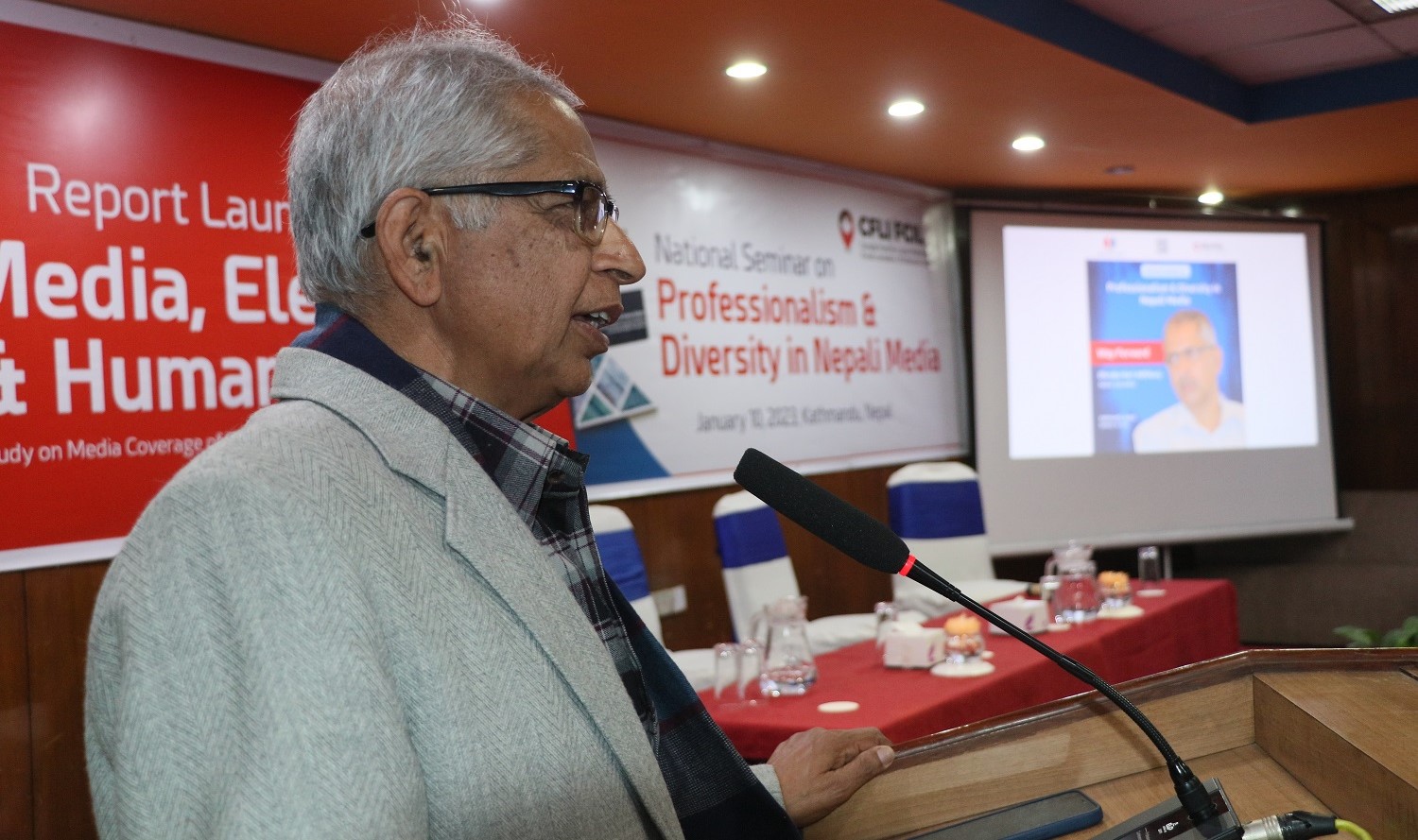
Study finds lack of media coverage of human rights and inclusion issues during elections
Kathmandu: Only 1.9 percent of the news reports produced by Nepali newspapers and online portals during the time of last November’s federal and provincial elections covered human rights and inclusion issues.

A study on the media coverage of elections from human rights perspective, carried out by Media Action Nepal (MAN) with support from the Canada Fund for Local Initiatives (CFLI), launched on Tuesday showed this exceptionally low number.
Launching the report, Minister of the Government of Nepal Damodar Bhandari highlighted the need to see issues of the society that the state does not see and to bring them to prominence and national attention. He also noted the growth Nepali media had made over the past few decades but worried that that growth had not reflected in the media’s content. “Nepali media may be getting tangled in surficial issues and not bringing forth the deep analysis required. The Government of Nepal stands with the media for its development,” he added.

Speaking during the event, Laxman Datt Pant, Chairperson of Media Action Nepal stated that Nepali media had raised issues, albeit limited as shown by the study, but lacked analysis. And to change that, and for the media to cover human rights and inclusion issues adequately and properly, Nepali press needs to change their approach towards covering these issues.
Bandana Rana, CEDAW Committee Member lamented that the media used sexist language and portrayed women in a stereotypical way. Women candidates were also presented as weak, emotional and indecisive during elections and in the aftermath, women family members were blamed for their husbands’ or sons’ decisions.

President of the Federation Nepali Journalists Bipul Pokhrel praised Media Action Nepal for producing reference materials for educating journalists and also for holding a mirror to journalism, He also showed just how wide an impact media content could have at all levels of the society so noted the need for the press to be accountable and fact-based.

Chairperson of the Working Journalists Association Janmadev Jaishi stated that Nepali media and media-people had not looked at issues of human rights and good governance because they were not self-sufficient and they are not self-sufficient because they lacked job security and remuneration. So, to guarantee that press people are able to perform their work to their full capacity while getting their due payments, policies and regulations need to amended, updated and enacted.

Digital Freedom Coalition Chair Baburam Aryal highlighted how, in today’s context, media were not only facing conventional threats but also threats from tech companies and digital platform owners. Technology can be used to curtail democratic rights and in the November elections in Nepal too, data manipulation, misinformation and AI-based content creation and dissemination were seen. If left unchecked, these can create problems for human rights, he added.

NHRC Commissioner Mihir Thakur urged the media to continue digging up the truth but not sensationalize the facts. He also highlighted the link between a free press, stable politics and human rights. However, he remarked that threats to equality and dignity in both media coverage and among media personnel remained and asked all stakeholders to focus on solving them.

The study looked at 7,459 news stories published in 20 media outlets (10 newspapers and 10 online news portals; three broadsheets and three portals from the Kathmandu Valley and seven broadsheets and seven portals from the provinces) over a period of 16 days (eight days before the election day, the polling day November 20 and seven days after the elections) and found that only 142 covered issues of human rights and inclusion.
Media Action Nepal believes this is a woefully low number considering that Nepal is a party to several international human rights instruments and the constitution of the country also expresses commitment to the principles of human rights and inclusion.

Furthermore, out of the 142 stories, 30 stories (21.13 percent) were related to women rights, 21 (14.79 percent) to social justice, 18 (12.68 percent) to education and health, 17 (11.97 percent) to youth employment and empowerment, 12 (8.45 percent) to the rights of people with disabilities, eight (5.63 percent) to the rights of farmers, one (0.70 percent) each on the rights of child and right to food, 10 stories (7.04 percent) to poverty alleviation, seven (4.93 percent) to the rights of senior citizens and 12 (8.45 percent) were related to the rights of minorities.
Corroborating concerns from LGBTIQ+ and Dalits that their voices do not find space in the media, only two news stories (1.41 percent) were on the rights of sexual and gender minorities and three (2.11 percent) on the rights of Dalits.
Surprisingly, none of the media outlets produced stories on good governance, an issue considered vital to voters during elections.
MAN Chairperson Pant called these findings thought-provoking and hoped that this study would encourage media owners and practitioners to introduce an effective in-house strategy for promoting issues of human rights and inclusion through their content.
Meantime, MAN held a separate seminar on Professionalism and Diversity in Nepali Media organized during the report launching occasion with three panel discussions. The first focused on human rights and Nepali media and concluded with a call to establish a dedicated HR beat in newsrooms.

The second panel, on the Inclusion and Diversity in Nepali Media, noted how diversity in newsrooms would help media get a clearer understanding of the society and make their coverage more comprehensive.

Panelists in the third panel – Regulation, Ethics and the Issue of Media Professionalism – voiced the need for media houses and media professionals to be aware in maintaining ethics.

Senior Journalist Dhruba Hari Adhikary concluded with the way forward and asked all to remember that information in public interest would only be news.
